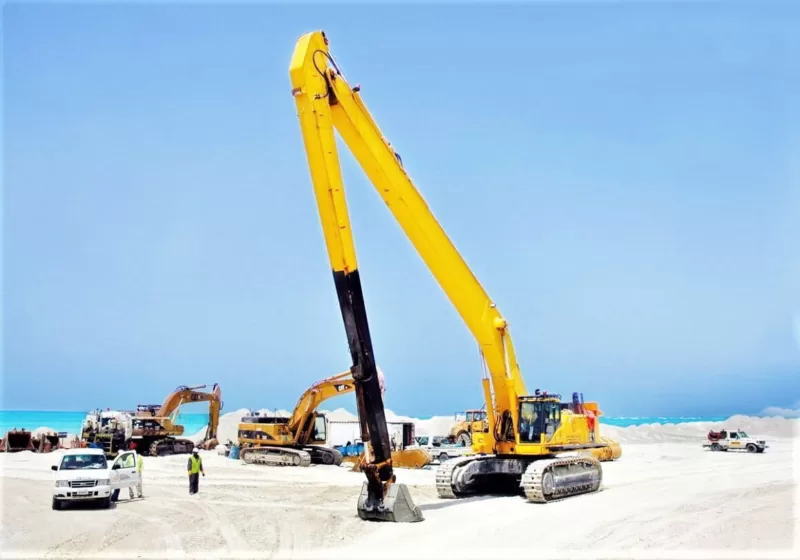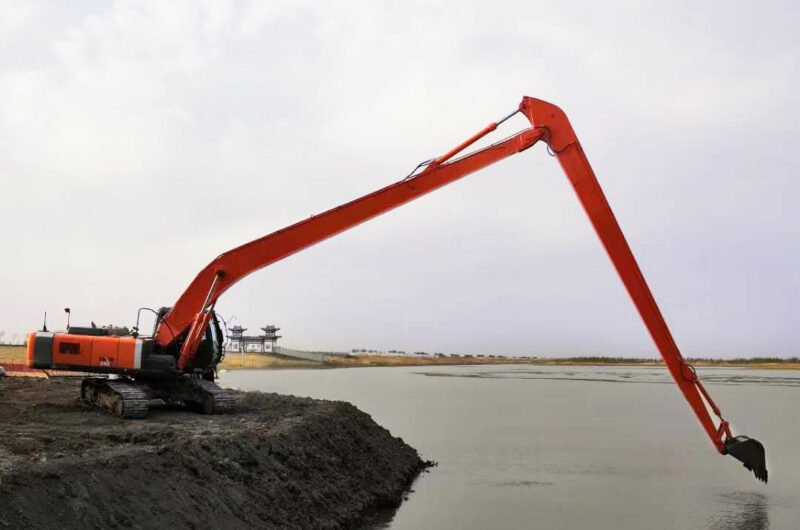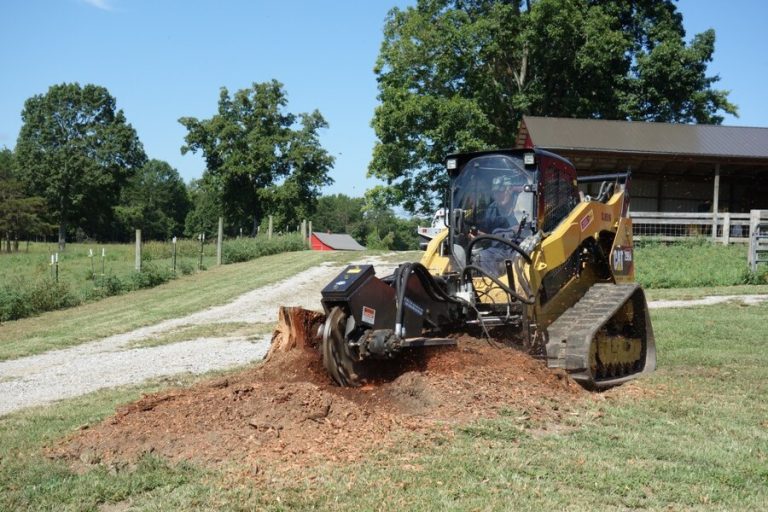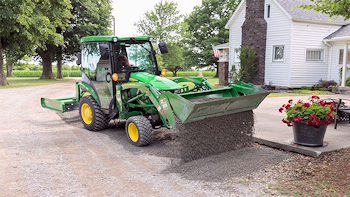Excavator Long Boom In Reclamation Engineering Operations
Reclamation engineering operations play a crucial role in reshaping landscapes, restoring ecosystems, and reclaiming land for various purposes. Excavators equipped with long booms are essential tools in these operations, as they provide the reach and versatility needed to handle a wide range of tasks. However, working with excavator long booms in reclamation projects presents unique challenges and safety concerns that require careful attention. In this article, we will explore the critical safety considerations that must be addressed when using excavator long booms in reclamation engineering operations, emphasizing the importance of proper training, equipment maintenance, and operational protocols.

-
Excavator Long BoomsOperator Training and Certification
One of the first and most crucial safety considerations when using excavator long booms in reclamation engineering operations is operator training and certification. Proper training ensures that operators are well-versed in the safe operation of this heavy machinery. Certified operators are more likely to make informed decisions, follow established safety procedures, and minimize the risk of accidents.
Key points for operator training and certification include:
- Licensing and certification: Operators should possess the necessary licenses and certifications to operate long-boom excavators legally and safely. These credentials verify that the operator has received the appropriate training and has passed the required tests.
- Specialized training: Excavator operators working on reclamation projects must receive specialized training that covers the unique challenges and safety considerations of this type of work. This training should address topics such as working on unstable terrain, managing long booms, and preventing environmental damage.
- Regular retraining: Safety standards and equipment technologies evolve, so operators should receive regular refresher training to stay updated on the latest safety procedures and best practices.
2.Equipment Inspection and Maintenance
Properly maintained equipment is essential for safe reclamation engineering operations involving excavator long booms. Regular inspections and maintenance routines help identify and address potential issues before they lead to accidents or equipment failures.
Key points for equipment inspection and maintenance include:
- Daily pre-operation checks: Operators should perform thorough pre-operation checks to identify any visible defects or problems with the equipment. This includes inspecting the long boom, hydraulic systems, tracks, and attachments.
- Scheduled maintenance: Long-boom excavators should undergo routine maintenance according to the manufacturer’s guidelines. This maintenance includes oil changes, filter replacements, hydraulic system checks, and inspections of critical components.
- Prompt repairs: If an issue is detected during an inspection or arises during operation, it must be promptly addressed. Continuing to use equipment with known issues can lead to accidents or equipment failures.
- Record keeping: Maintaining detailed records of equipment inspections, maintenance, and repairs helps ensure that all necessary tasks are completed on schedule and provides a valuable resource for tracking the history of the equipment.

-
Site-Specific Safety Assessments
Each reclamation engineering site presents a unique set of challenges and safety considerations. Conducting a thorough site-specific safety assessment is crucial to identify potential hazards and develop safety plans tailored to the specific project.
Key points for site-specific safety assessments include:
- Environmental impact assessment: Determine the potential impact of excavation, grading, and reclamation activities on the surrounding environment, including soil erosion, water quality, and wildlife habitats.
- Geotechnical analysis: Assess the stability of the soil and terrain to identify potential hazards such as landslides, sinkholes, or unstable slopes.
- Utility and underground infrastructure checks: Identify the locations of underground utilities, pipelines, and other infrastructure to avoid accidental damage during excavation.
- Emergency response planning: Develop contingency plans for addressing accidents, spills, or unforeseen events. Ensure that all personnel are trained in emergency response procedures.
-
Safe Boom Operation
The operation of the excavator long booms is a critical aspect of safety in reclamation engineering projects. Proper use and control of the long boom are essential to prevent accidents and protect both the operator and the environment.
Key points for safe boom operation include:
- Load limits: Operators must be aware of the machine’s load capacity and avoid exceeding it. Overloading the long boom can lead to instability and tip-overs.
- Controlled movements: Operators should use smooth and controlled movements to avoid sudden jolts or jerks that can destabilize the machine. This is especially important when handling heavy loads or working on uneven terrain.
- Awareness of surroundings: Operators must maintain constant awareness of their surroundings, including the position of other workers, potential obstacles, and the proximity of sensitive environmental areas.
- Ground conditions: The ground on reclamation sites can be unpredictable. Operators must be vigilant for signs of shifting or unstable ground and adjust their operations accordingly.
-
Environmental Considerations
Reclamation engineering operations often focus on restoring or improving the environment, so protecting the surrounding ecosystem is paramount. Excavator operators must be aware of the potential environmental impacts of their work and take steps to mitigate them.
Key points for environmental considerations include:
- Erosion control: Implement measures to control soil erosion, such as silt fences, erosion control blankets, and revegetation efforts. Avoid operations that could exacerbate erosion.
- Spill prevention: Prevent the release of fuels, lubricants, or hydraulic fluids into the environment. Use spill containment materials and follow spill response procedures if a spill occurs.V
- Habitat protection: Be mindful of the impact on local wildlife and ecosystems. Establish exclusion zones to protect sensitive areas, and avoid disrupting nesting or breeding sites.
- Compliance with regulations: Familiarize yourself with and adhere to all local, state, and federal environmental regulations and permits relevant to your reclamation project.
-
Communication and Coordination
Effective communication and coordination among all personnel involved in reclamation engineering operations are essential for ensuring safety. This includes operators, ground crew, supervisors, and anyone else on the worksite.
Key points for communication and coordination include:
- Clear communication: Establish clear communication protocols and ensure that all workers understand and follow them. This includes using standardized hand signals or two-way radios when working with excavators.
- Supervision: Assign qualified personnel to supervise excavator operations and ensure that safety protocols are followed.
- Emergency procedures: Ensure that all workers know the emergency procedures for accidents, injuries, or equipment failures. These procedures should include how to summon medical assistance and respond to environmental incidents.
- Safety meetings: Hold regular safety meetings to discuss potential hazards, reinforce safety procedures, and address any concerns or questions from the workforce.
Conclusion
The use of excavator long booms in reclamation engineering operations offers the ability to reshape landscapes and restore ecosystems, but it also presents unique safety challenges. By prioritizing operator training, equipment maintenance, site-specific safety assessments, safe boom operation, environmental considerations, and effective communication and coordination, it is possible to mitigate risks and ensure a safe working environment. Reclamation projects can be successful and sustainable when safety is a top priority throughout the process.




